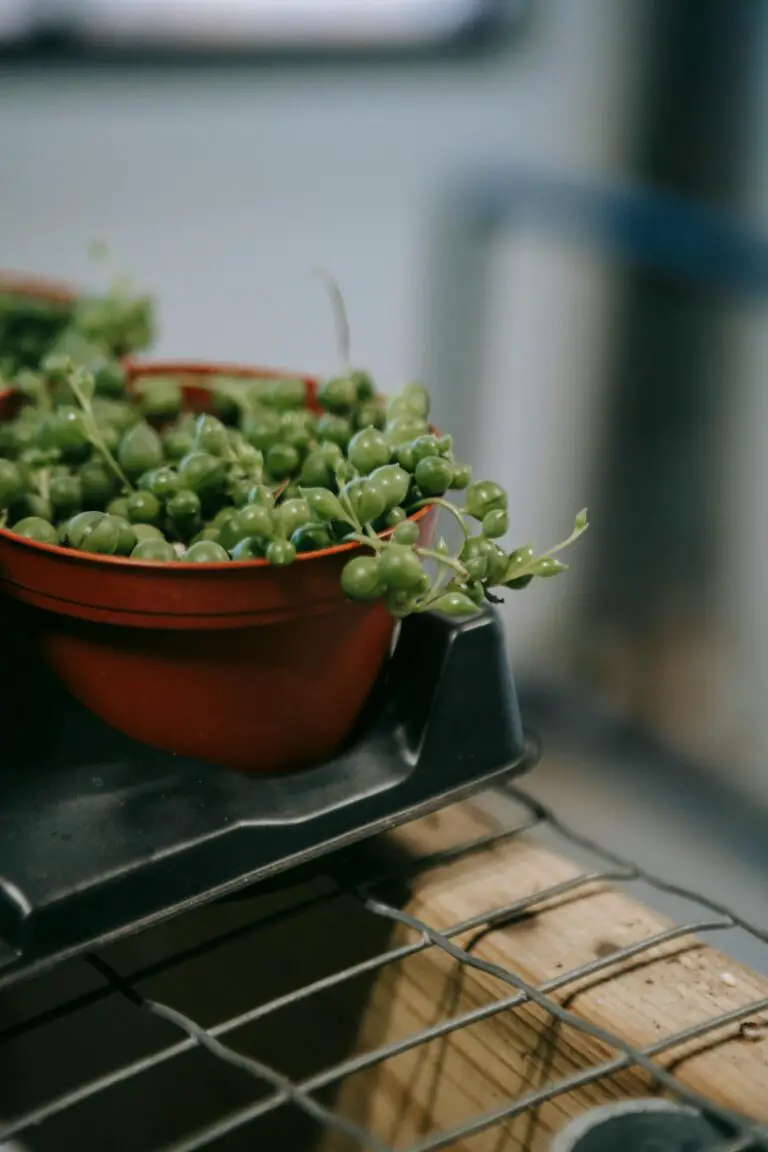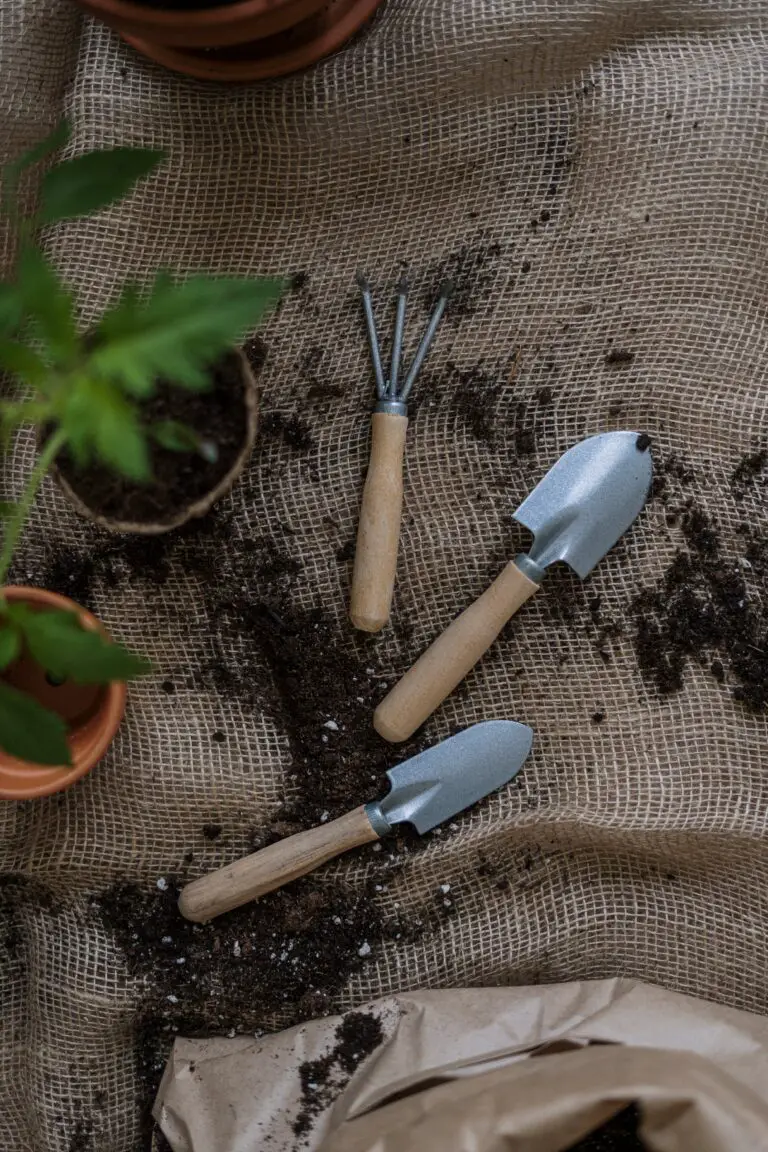Introduction to Senecio Stapeliiformis
Welcome to the alluring realm of Senecio Stapeliiformis, a bewitching succulent that conjures visions of ocean depths with its sea creature-like appearances. Its striking semblance to marine wonders like starfish has garnered it fame among botanical aficionados and casual observers alike.
Originating from the arid landscapes of South Africa, this succulent is a testament to the incredible adaptability of plant life. Its pencil-shaped stems and vibrant, daisy-like flowers evoke a sense of curiosity and delight. And for those who are charmed by the quirks of nature, Senecio Stapeliiformis stands as a living sculpture, effortlessly mimicking the textures and shapes of coral reefs.

Its popularity isn’t just skin deep. Dive into succulent care, and you’ll understand why this resilient species is a staple in the collections of green-thumbed enthusiasts. With a care routine that rivals the simplicity of a cactus, even those new to plant parenting can find success with this forgiving greenery. No green thumb? No problem! The Senecio Stapeliiformis is forgiving enough for even the busiest of owners.
In our modern homes, space can be limited, but Senecio Stapeliiformis doesn’t demand vast expanses. Its compact form is perfect for sprucing up workspaces or cosy living areas. Curious to see how you can incorporate this succulent into your own home oasis? Discover more on indoor succulent aesthetics.
So, if you’re looking to add a dash of oceanic flair to your terrestrial garden, or seeking a conversation starter for your indoor plant collection, set your sights on this marine mimic. Senecio Stapeliiformis is not just a plant; it’s a manifestation of nature’s playful side, a treasure trove for plant lovers, and a must-have for those in pursuit of the extraordinary.
Visual Guide to Identifying Senecio Stapeliiformis
Meet Senecio Stapeliiformis, a succulent plant that’s often confused with marine life due to its starfish-like appearance. This extraordinary succulent, with its cylindrical stems patterned with subtle stripes and speckles, stands out in any collection. Not only do these stems mimic the appearance of underwater creatures, but they also introduce an otherworldly element to your home or garden.
While its stems are quite a spectacle, the Senecio Stapeliiformis saves its best act for those rare blooming moments. The flowers that emerge are not just striking; they’re an extravagant display of nature’s artistry. These blossoms, often shaded in soft purples and pinks, have an architectural complexity that could rival the most intricate origami masterpieces. They serve as a reminder that succulents aren’t just about endurance; they’re also capable of exquisite beauty.
Understanding the needs and unique attributes of the Senecio Stapeliiformis is crucial for successful growth. Newbies and seasoned gardeners alike can learn a lot about succulent care from observing this plant’s adaptability and minimal water requirements, reflective of its indigenous arid terrains. By appreciating its individuality, we unlock secrets to thriving caretaking practices that can apply to more than just this plant.
Another fascinating aspect of Senecio Stapeliiformis is its resilience. This plant not only withstands the scorching sun and parched soils but thrives in them. It’s a living lesson in durability and strength—a testament to the power of adaptation. Despite its robustness, it retains a certain grace and elegance, a harmonious blend of ruggedness and refinement. For those passionate about succulents or simply looking for an intriguing addition to their indoor garden, taking a closer look at this species is definitely worth their time. For more insights into the wonders of these resilient plants, check out this deep dive into succulent care and variety.
Whether you are a seasoned gardener or a curious onlooker, Senecio Stapeliiformis offers a captivating study in botanical beauty and survival. This plant, with its distinctive form and arresting flowers, invites you to observe closely, savor its presence, and learn from its low-maintenance yet high-impact way of life.
“`html
Optimal Growing Conditions for Your Starfish Plant
Imagine a succulent that’s as captivating as a starfish from the ocean’s depths – that’s your Senecio Stapeliiformis. Providing the ideal growing conditions for this peculiar plant can be akin to creating a miniature coastal paradise right in your home. Let’s dive into how to make your Starfish Plant thrive with vibrant health.

First things first, sunlight is to Senecio Stapeliiformis what a warm embrace is to us: essential. This succulent loves a good bask in bright, indirect sunlight. A spot near a south-facing window where gentle sunbeams can dance on its slender, pencil-like stems is ideal. But beware, too much direct sun can scorch its skin, much like a harsh midday sun at the beach.
When it comes to temperature, Senecio Stapeliiformis enjoys mild climates, with a preference for daytime temperatures between 70-80°F (21-27°C). Think of a spring day’s warmth, where you can lounge comfortably without a sweater. Nights can be cooler, but make sure they don’t dip below 50°F (10°C), as this starfish doesn’t cuddle in the cold.
Aside from sunlight and temperature, there are other actors in this play of growth. The air’s embrace, or humidity, plays a part. In its native habitat, Senecio Stapeliiformis enjoys arid conditions; your home should mimic this low humidity environment. Think about when you’re craving a sip of cool water on a dry day – that’s how infrequently this succulent likes its drinks. So when watering, do so sparingly and ensure the soil is well-draining to prevent soggy roots. A mix akin to desert sand with a bit of organic matter would be the preferred bed for this beauty.
By nurturing your Senecio Stapeliiformis with these conditions, you’ll have a robust, happy plant that’s a fascinating conversation starter. And if you’re wondering about the right type of soil for your succulent, check out our guide on crafting the perfect succulent soil for healthy, thriving growth.
“`
Planting and Repotting Essentials
Welcome to the thrilling world of Senecio Stapeliiformis! If you’ve been charmed by the starfish-like appearance of this unique succulent, you’ll be delighted to know that getting it settled into your home is an enjoyable and gratifying experience. Let’s dive into the essentials of planting and repotting, guiding you through a seamless transition for your spiky friend.
Choosing the Right Home: Pots and Soil Mix
First things first, selecting the perfect pot is crucial for your Senecio Stapeliiformis. A terracotta or clay pot with ample drainage holes will serve you well, marrying style and functionality. Not too big, not too small – just right to allow your succulent to comfortably spread its roots without drowning them in excessive space.
When it comes to soil, drainage is the name of the game. Mix in equal parts of succulent potting mix and coarse sand or perlite. This concoction ensures a fast-draining environment, imitating the arid landscapes our succulent hero naturally thrives in. Imagine a miniature desert oasis in your living room – that’s what you’re aiming for!
The Perfect Potting Process
Now, the fun part – potting! Start by gently removing your Senecio Stapeliiformis from its nursery container, keeping the roots intact as much as possible. A little shake here, a gentle tug there, and voilà, it’s ready for its new abode. Place a layer of gravel at the bottom of your chosen pot to improve drainage even further and keep root rot at bay.
Next, hold your succulent in the center of the pot and sprinkle your special soil mix around it, tamping down lightly to remove air pockets. Remember, this plant’s roots are delicate, so handle with care. Think of it as tucking it into bed, nice and cozy.
Repotting: A Fresh Start
As your Senecio Stapeliiformis grows, it’ll eventually crave more space to stretch its roots. That’s repotting cue! Every couple of years, during its growth period, upgrade your succulent to a slightly larger pot. The process is similar to planting, but with an extra step – gently tease out the roots to encourage them to reach out into their new space.
Consider repotting as a fresh start, an exciting new chapter in your succulent’s life. It’s a chance to inspect the roots, refresh the soil, and ensure a healthy future. A touch of love, a dash of care, and your Senecio Stapeliiformis will continue to impress with its otherworldly charm.
Here’s a tip from a seasoned succulent enthusiast: Think of repotting as a “spa day” for your plant. It’s not just a necessity; it’s an indulgence that rewards you with vigorous growth and vitality. Tend to your green companion with the tender touch it deserves, and it’ll grace your space with its unmistakable flair.

Ready your gardening gloves and get prepared to embark on this planting and repotting adventure. With these steps, your Senecio Stapeliiformis will not just survive, but thrive, bringing a touch of the exotic to your horticultural collection. Happy planting!
Watering Practices for a Thriving Senecio Stapeliiformis
Are you wondering how to keep your Senecio Stapeliiformis as vibrant as a cluster of ocean stars? Well, let’s dive into the world of watering this unique succulent. Imagine you’re a detective, and the mission is to discover the perfect balance of moisture for your green companion. It’s not just about giving it a drink; it’s about understanding its needs and responding accordingly.
Firstly, identifying the right time to water your starfish-like friend is crucial. You don’t want to drench it on a schedule but rather be attentive to its soil conditions. While you may have heard of the ‘soak and dry’ method, what does that mean in the life of a Senecio Stapeliiformis? Think of it as waiting for the soil to become as dry as a sandy desert before offering it a refreshing oasis. Stick your finger or a wooden stick about an inch into the soil; no moisture? It’s time to water!
Now, how much water should you offer? It’s not about quenching a thirst but providing just enough to meet its needs. Pour slowly and watch how the water absorbs — imagine a gentle rain falling on arid land, giving it life but not causing a flood. The amount will vary depending on the season; less in winter when the plant is resting, and more in the warmer months of growth. Think of it like dressing for the weather, only for your succulent—enough to keep it comfortable but not overwhelmed.
Recognizing the signs of over and under-watering is like interpreting the plant’s language. Over-watering can lead to swollen, mushy leaves — as if your plant has binge-drunk a large gulp of seawater. Under-watering, on the other hand, will cause the leaves to wilt and look deflated, a clear SOS for hydration. Finding the sweet spot is key, just like balancing a diet with the right amount of nutrients and indulgences. Your plant will show its appreciation with vibrant colors and a firm, healthy structure.
Ready for a visual guide? Take a peek at this video, which can help turn you into a watering wizard for your Senecio Stapeliiformis:
Remember, each plant has its own personality, so while these tips are a great starting point, don’t be afraid to adjust your approach as you learn more about your own Senecio Stapeliiformis’s personal preferences. Happy watering!
Maintaining and Propagating Senecio Stapeliiformis
Welcome to the world of Senecio Stapeliiformis, a succulent that not only adds a quirky charm to your garden or windowsill but is also relatively straightforward to propagate and maintain. Let’s jump right into how you can keep this starfish look-alike in top shape and multiply your collection.
Pruning: Keeping Your Senecio Happy and Healthy
The key to a thriving Senecio Stapeliiformis is understanding when and how to prune it. You might think, why fix something that isn’t broken? But here’s the deal: pruning isn’t just about fixing; it’s about preventing. By selectively snipping away parts of the plant that are overgrown or starting to wither, you encourage a burst of new growth and help the plant focus its energy where it counts. Real-life experience shows that a little snip here and there can lead to a more robust and visually appealing plant.
Propagating Like a Pro
Have you ever wished you could clone your favorite plant? With Senecio Stapeliiformis, it’s almost that simple. Propagation through cuttings is like gifting life to new plants. Just imagine: one day you’re trimming your succulent, the next you’re the proud parent to a fresh batch of miniatures. Seriously, what could be more rewarding than that? Take a healthy cutting, let it callous over for a couple of days, then gently place it in well-draining soil. Give it some time, and voilà — new growth will start to emerge.
To get you even more excited about this process, here’s a video that walks you through the propagation of Senecio Stapeliiformis. Watch these tips unfold before your eyes and get ready to spread the succulent love:
In conclusion, whether you’re pruning or propagating, remember that each snip and slice could lead to a new beginning for your Senecio Stapeliiformis. It’s a delightful journey that not only enhances your green thumb skills but also expands your succulent ensemble. Enjoy the process, share with friends, and watch your garden of quirky Senecio Stapeliiformis take shape!
Dealing with Pests and Problems
Imagine one day you notice your beloved Senecio Stapeliiformis looking a bit under the weather. The once radiant mimic of starfish, with its unique pencil-like stems, is suddenly wilting. You wonder why? Well, it’s time to play detective and consider the usual suspects: pests and diseases. Put on your gardening gloves, because we’re diving into the best practices for keeping your green buddy thriving!
First off, meet the usual culprits. Aphids, mealybugs, and spider mites view your Senecio Stapeliiformis as a deluxe dinner spread. These tiny invaders can be quite stealthy, often setting up camp on the undersides of leaves or in the nooks of stems. Real-life cases have shown that a seemingly harmless aphid can snowball into an infestation that siphons the life out of your plant if left unchecked.

To combat these miniature marauders, start by quarantining affected plants to prevent a garden-wide pest party. Regular inspections are key—think of it as a wellness check-up. Use a magnifying glass to spot those sneaky bugs before they wreak havoc. And when you do spot them, it’s time to take action. Non-toxic insecticidal soap sprays are an excellent first line of defense, effectively washing away your pest problems while being gentle on your plant.
Now, don’t let your guard down when it comes to diseases either. Overwatering your succulent can lead to root rot—a silent killer that can decimate your plant from the ground up. Picture this: you’re generously watering your plant, but those extended periods of wet feet create a perfect breeding ground for fungi. The key is moderation. Allow the soil to dry out completely between waterings, and ensure that pots have proper drainage to prevent water from pooling.
Remember, proactive plant care is better than reactive plant care. Keep an eye out for early warning signs, like discolored leaves or a sudden drop in vigor, and act swiftly. A healthy Senecio Stapeliiformis is a happy one, and with these tips, you’ll be the hero in your own garden story, safeguarding the unique beauty of this succulent starfish mimic.
Senecio Stapeliiformis in Home Decor
Have you ever considered adding a touch of the whimsical to your home decor? The striking Senecio Stapeliiformis, with its remarkable resemblance to a starfish, offers just that. Imagine welcoming guests into a living space that deftly blends natural beauty with modern aesthetics, where the Senecio Stapeliiformis becomes a charismatic focal point.
One trendy approach to showcasing these succulents is terrariums—self-contained ecosystems that serve as both an art piece and a botanical statement. Picture this: a sleek glass terrarium perched atop your coffee table, the Senecio Stapeliiformis peeking out amidst a collection of rocks and sand, creating a miniature desert landscape right in your living room. Not only does it spark conversation, but it also brings a serene slice of nature into your urban abode.
Plant arrangements have taken a creative turn with the incorporation of Senecio Stapeliiformis. Envision a chic, minimalist planter on your bookshelf, where the succulent’s elongated, striped stems emerge between the pages of your favorite literature. It serves as an organic bookmark, a touch of green that invigorates your reading nook.
Now, let’s paint a more elaborate picture. A large, airy dining area with an expansive table adorned with a centerpiece that defies the ordinary—Senecio Stapeliiformis, artfully arranged with other succulents and delicate florals, providing a feast for the eyes that rivals the culinary delights. Green tendrils wind their way through the display, symbolizing growth and creativity, a testament to your unique sense of style.

Whether you’re a devout plant lover or a newcomer to the world of succulents, Senecio Stapeliiformis presents endless possibilities to elevate your space. It’s more than just a plant; it’s a narrative device that tells stories of wild, untamed landscapes and the intricate beauty of nature’s design. By incorporating it into your home decor, you invite a piece of that magic into your everyday life, transforming the mundane into something truly spectacular.
So there you have it—integrating Senecio Stapeliiformis into your home decor is not just about adding a plant; it’s about crafting an environment that speaks to your personality and imagination. With every glance at its starfish-like form, let it remind you of the infinite ways nature can complement and enhance our interiors.
Real-Life Stories: Succulent Aficionados Share Their Experiences
The existence of Senecio Stapeliiformis elicits a sense of wonder and curiosity that only intensifies the more we delve into the experiences of those who nurture them. It’s truly fascinating to hear plant enthusiasts describe their journeys with this mimicking marvel of nature. The anecdotes range from utter astonishment at how a succulent can so closely resemble the structure of a starfish, to tales of trial and error in mastering its care.
Louise’s Balcony Bliss: On a sun-drenched balcony in Santorini, Louise recounts how her Senecio Stapeliiformis became the centerpiece of her outdoor sanctuary. “I remember the first time I laid eyes on it; its pencil-like arms angled so perfectly, just like a sea creature stranded on a rocky shore. It thrived in the Mediterranean climate, but not without a learning curve. Getting the watering right was a dance with the elements – too little and it longed for more, too much and it recoiled. Now, it’s the highlight of my balcony garden, a showstopper that sparks conversation and awe alike.”
Max’s Fascination Turned Obsession: Max, a seasoned horticulturist whose expertise ranges across various plant species, found himself entirely captivated by the enigmatic appearance of Senecio Stapeliiformis. “With each new shoot, I felt as if I was discovering the plant all over again,” he explains. “It’s an enthralling experience to observe its adaptations—the fleshy, striped stems that retain moisture, fooling onlookers into thinking it’s more akin to the sea than the soil.”
Amelia’s Humble Beginning: In contrast, Amelia’s green thumb didn’t come as naturally. Her entry into the world of succulents began with a tiny Senecio Stapeliiformis, which she admits was met with some trepidation. “It started out so small, and I was uncertain if I could provide the right care. But with patience and a bit of research, that little plant has flourished. It was a tangible reminder that every expert has to start somewhere, and every plant can teach us a lesson in resilience and growth,” she shares with a warm smile.
Incorporating real-life examples imbues each anecdote with relatability and warmth, reminding us that the journey to succulent mastery is as unique as the plants themselves. Just when you feel you’ve grasped their essence, Senecio Stapeliiformis surprises you, unfolding new narratives and chapters in the lives of those who cherish them.
For those eager to start their own journey or take their existing knowledge further, immersing oneself in visuals can make all the difference. With this in mind, here’s a video tour from a fellow succulent admirer showcasing an impressive collection, including insights on the care for these striking plants:
Whether you’re a novice or well past the beginner stage, let the tales of others inspire you to explore the enveloping world of Senecio Stapeliiformis. His distinctive nature and the dedication it inspires become a connecting thread among enthusiasts, weaving a global community of succulent aficionados.
Frequently Asked Questions
When it comes to Senecio Stapeliiformis, or the Pickle Plant, enthusiasts and newcomers alike often wrestle with similar queries. Let’s dive into the succulent soil of knowledge and unearth answers to some of the most common questions surrounding this starfish-mimicking marvel!
What Sets Senecio Stapeliiformis Apart from Other Succulents?
Imagine a succulent so adept at mimicry, it could be mistaken for an underwater creature! The Pickle Plant, with its elongated, pickle-like leaves and striking hues, isn’t your garden-variety succulent. This South African native stands out for its cylindrical leaves and resemblance to the undulating arms of a starfish – a true maverick in the succulent world!
Can Senecio Stapeliiformis Thrive Indoors?
Absolutely! With the right amount of sunlight streaming through your window and a cosy pot to call home, the Pickle Plant can transform any living space. Watching it flourish beside your morning coffee spot, you’ll marvel at nature’s indoor adaptability. Indeed, this succulent’s love for bright, indirect light makes it an interior decorator’s green-thumbed dream.
How Often Should I Water My Pickle Plant?
Here’s where the magic word ‘moderation’ comes into play. Picture the arid landscapes of South Africa – Senecio Stapeliiformis evolved to thrive with less water, not more. Be cautious not to dote on it with the watering can; instead, allow the soil to dry out between drinks. This way, you’ll avoid the dreaded overwatering and root rot, ensuring your succulent’s longevity.
What Are Some Signs of a Happy Senecio Stapeliiformis?
Like a content cat basking in the sun, a thriving Pickle Plant will show signs of sheer satisfaction. Look out for firm, pickle-esque leaves, a robust green color, and an overall perky demeanor. If you spot new growth or even the occasional bloom, give yourself a green thumb’s up – you’re on the right track!
Is Propagation Possible with Senecio Stapeliiformis?
Indeed, the semicolon to its story is propagation! By taking cuttings from a healthy plant and allowing them to callous over, you can write new chapters of Pickle Plant proliferation. This process isn’t only practical; it’s a way to share your succulent saga with friends and family. Watch as your cuttings take root and begin their own journey, just as yours once did.
Having addressed these intriguing inquiries, it’s evident that Senecio Stapeliiformis is not just a pretty face among succulents. It’s a resilient, adaptable, and utterly fascinating member of the plant kingdom that can flourish with a bit of knowledge and care. And remember, the best advice comes not only from guides but also from getting your hands a little dirty and learning from personal experience!



